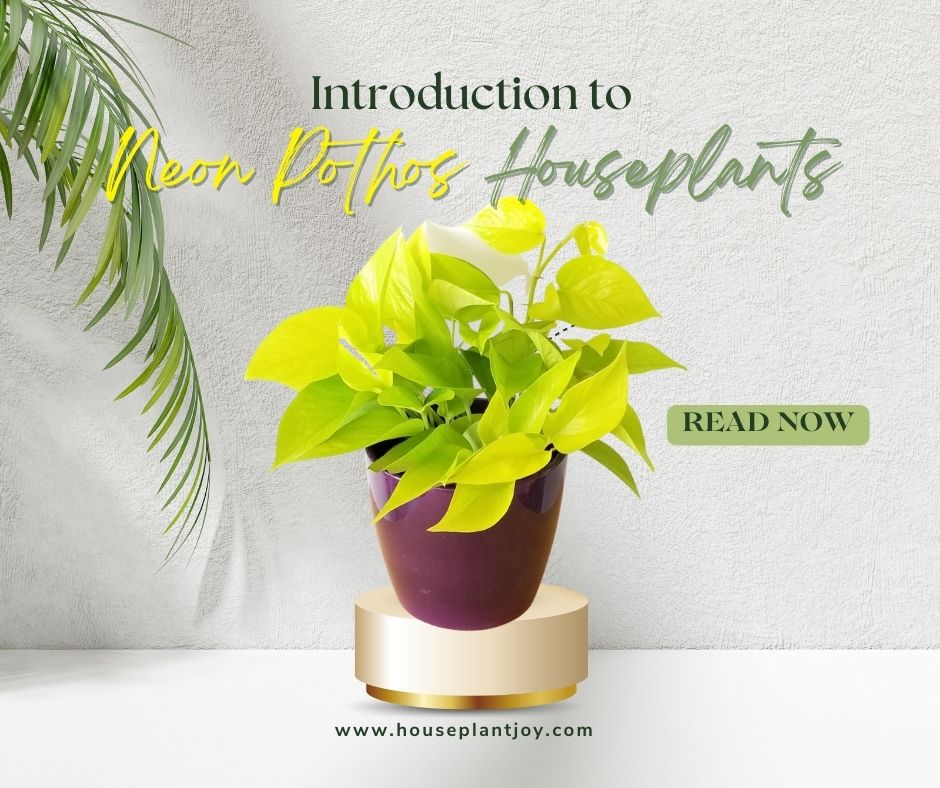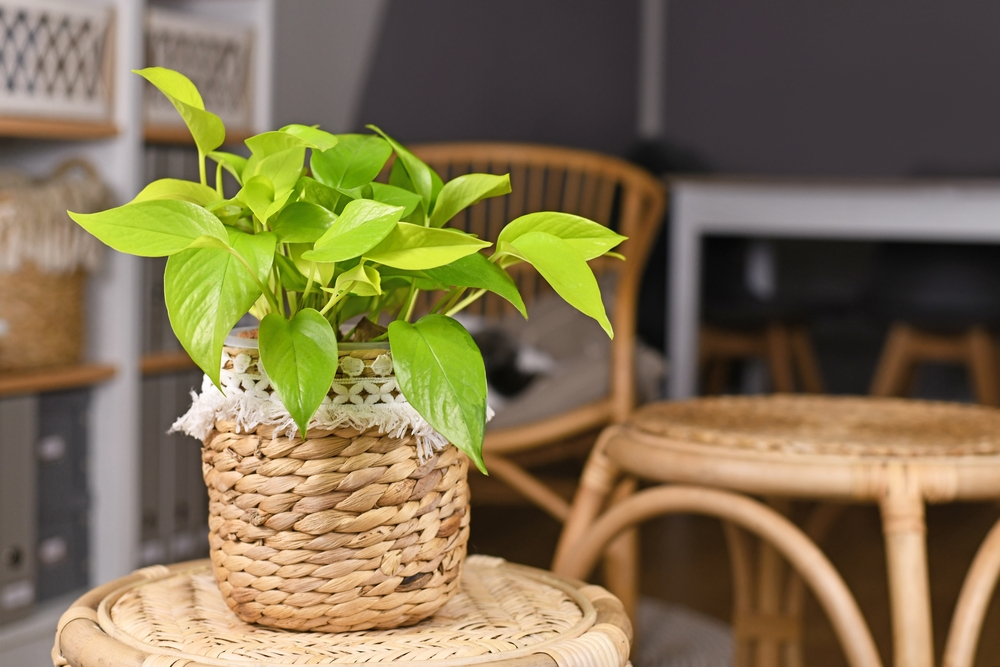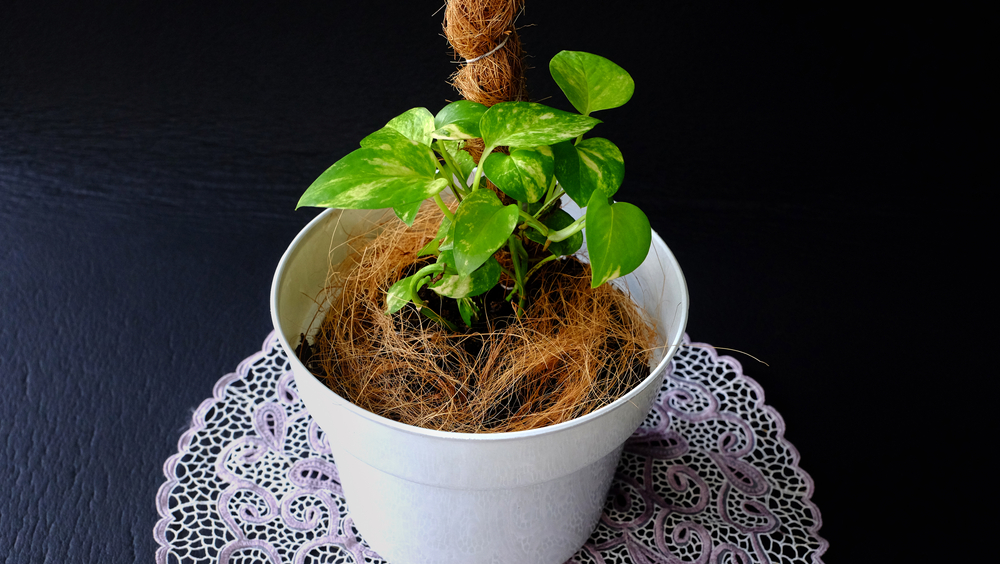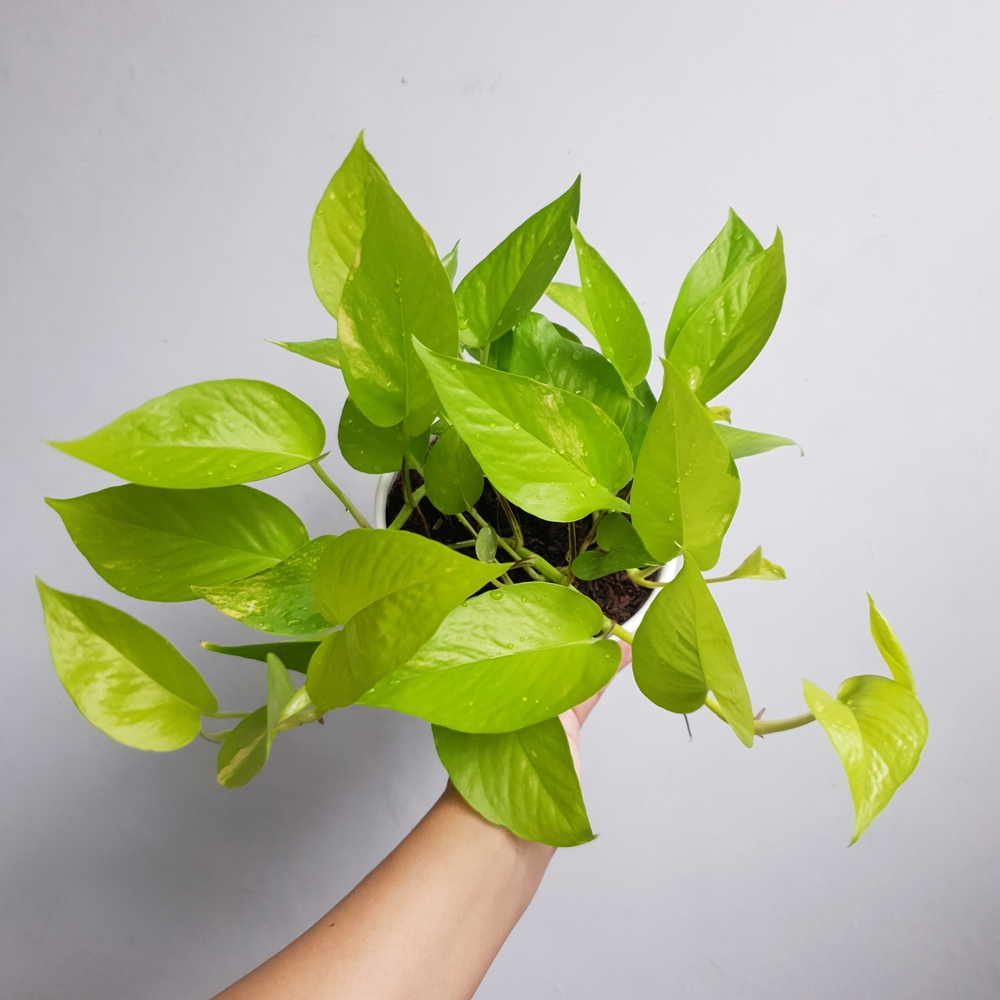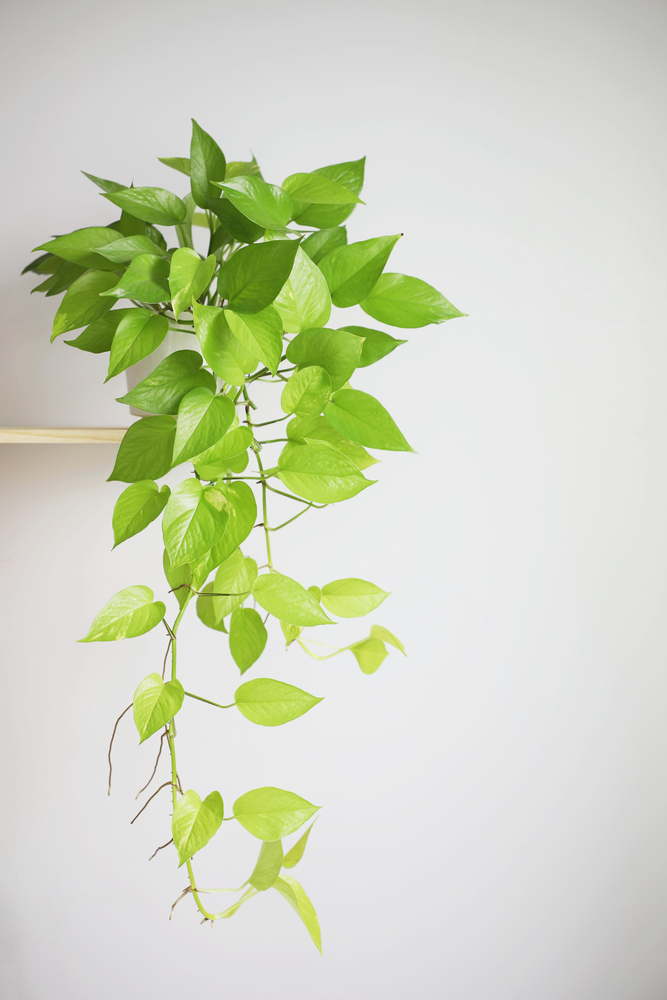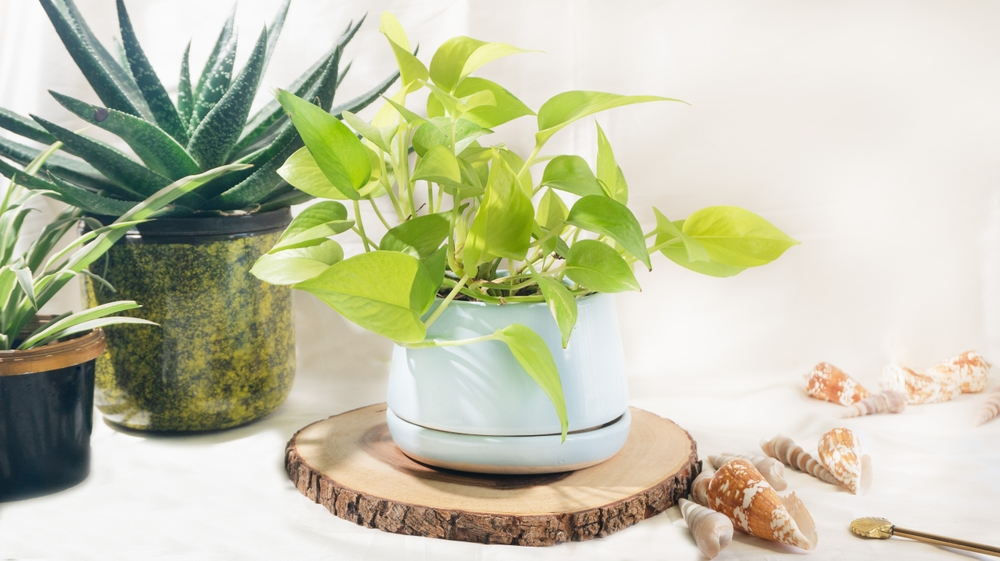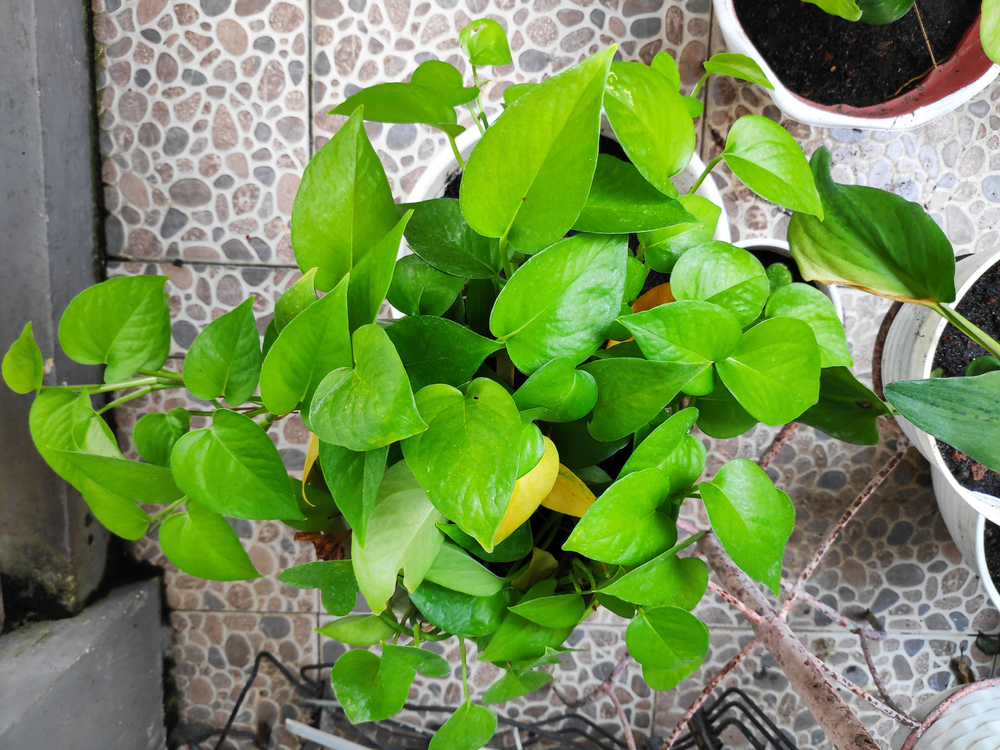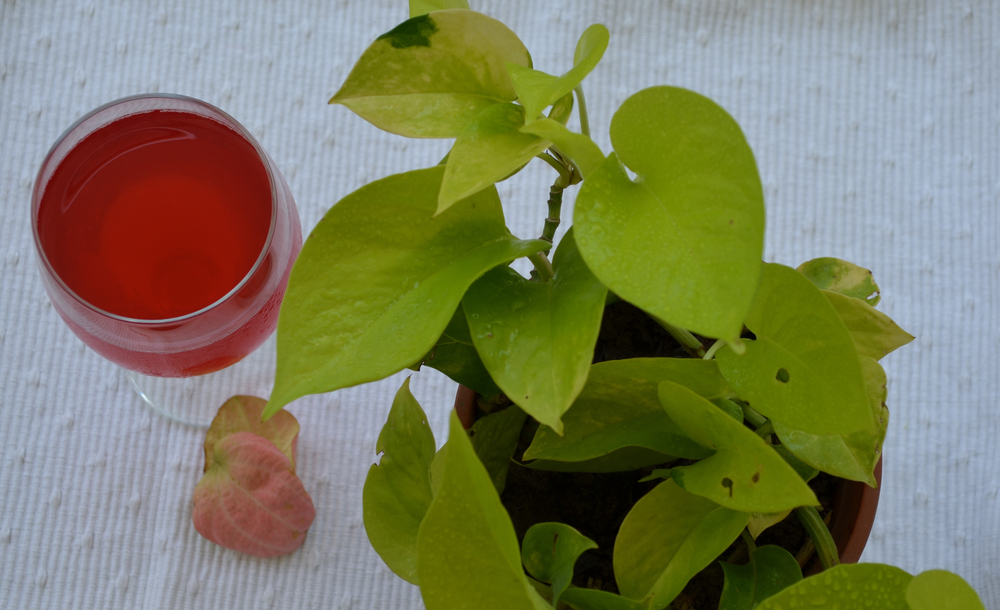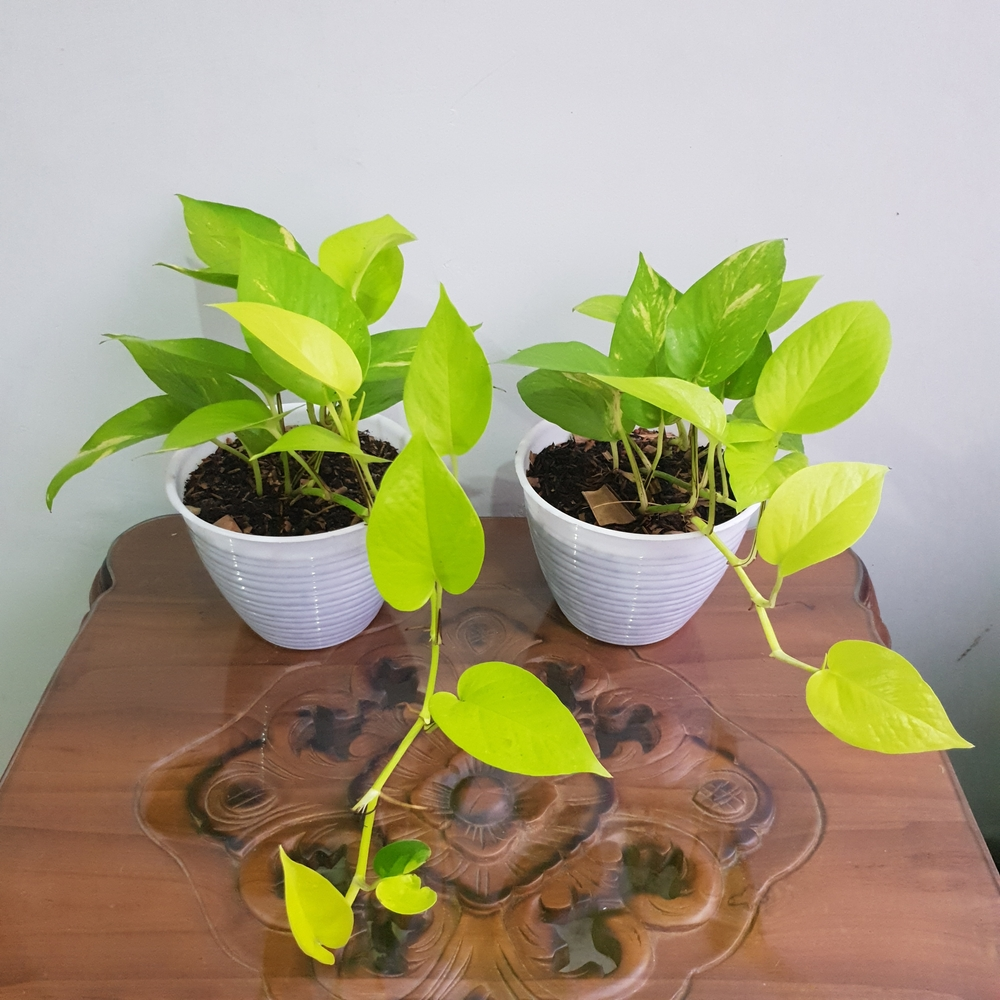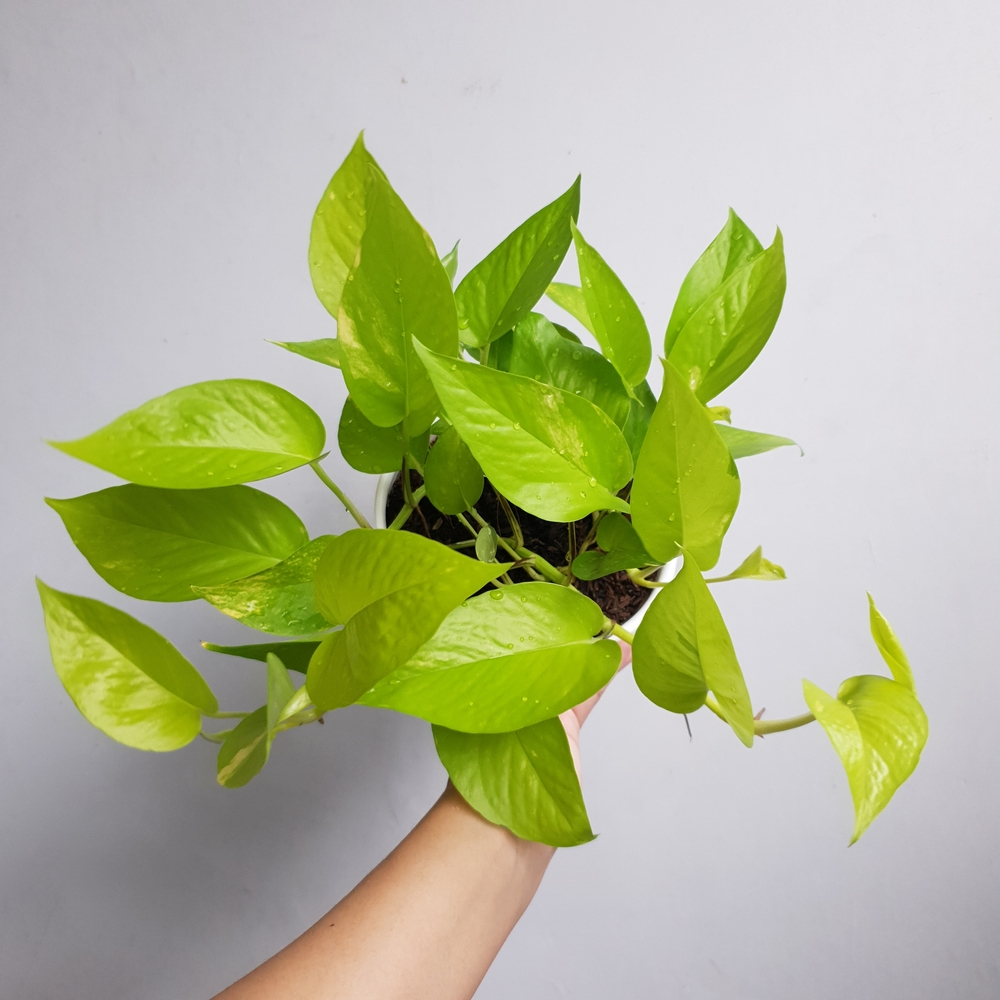HousePlantJoy is supported by our audience. When you purchase through one of our links, we may earn a small affiliate commission. As an Amazon Associate I earn from qualifying purchases. Your cost is not affected.
==================
Hey there, fellow plant enthusiasts! Have you ever stumbled upon a houseplant that instantly brightened up your day with its vibrant, neon-green leaves? Well, I certainly did when I first crossed paths with the delightful Neon Pothos houseplants while visiting a friend’s place. Those radiant, heart-shaped leaves seemed to radiate warmth and positivity, capturing my attention and curiosity in an instant.
As my fascination with these charming plants grew, so did my desire to delve deeper into the world of Neon Pothos. I embarked on a journey of research and discovery, uncovering not only their stunning aesthetic appeal but also the incredible benefits they bring into our indoor spaces.
In the following read, we’re going to dive into what makes Neon Pothos houseplants so special. We’ll explore the myriad advantages they offer, share insights into their care requirements, and equip you with valuable tips to ensure your Neon Pothos stays vibrant and healthy. Whether you’re a seasoned plant aficionado or just starting your green-thumb adventure, there’s something for everyone in this green-tinted journey.
So, join me as we unravel the secrets of these neon wonders, and together, let’s brighten our indoor gardens and homes with the magic of Neon Pothos!
Introduction to Neon Pothos Houseplants
As a plant lover, I first encountered neon pothos houseplants while visiting a friend’s house. I was immediately captivated by their vibrant, cheerful colors that seemed to radiate warmth and positivity. Intrigued, I started researching more about these charming plants, and the more I learned, the more I fell in love with them.
When one thinks of vibrant indoor gardens, the image of neon pothos houseplants often springs to mind. With their bright, heart-shaped leaves, these lively, lush plants are a beautiful and easy way to add a touch of green to any indoor setting. Loved by plant enthusiasts and beginners alike, neon pothos are not just a joy to look at but also offer a host of benefits that make them ideal houseplants.
In the following sections, we’ll delve deeper into what makes neon pothos houseplants so special. We’ll explore these plants’ benefits and aesthetic appeal, learn about their care requirements, and discover some valuable tips to keep them looking their best.
Benefits and Aesthetic Appeal of Neon Pothos
Neon pothos are not just great to look at; they also come with many benefits. Firstly, they are excellent air purifiers. Neon pothos houseplants can help remove toxins from the air, improving the overall air quality in your home. This can be particularly beneficial for those with allergies or respiratory problems.
The aesthetic appeal of neon pothos is undeniable. Their vibrant neon leaves can brighten up any indoor space, adding a touch of nature to your home decor. Whether hanging them in a basket or climbing a trellis, these versatile plants can quickly adapt to your aesthetic preferences.
Moreover, neon pothos are known for their hardiness. They can tolerate many conditions, making them an excellent choice for those new to plant care. Caring for these plants can be a delightful experience whether you have a green thumb or not.
Detailed Guide to Pothos Neon Plant Care
Understanding how to care for your neon pothos houseplants is essential for their growth and longevity. These plants are generally low-maintenance, but there are certain factors you need to consider. These include the right amount of light, appropriate watering, and using suitable soil.
Firstly, neon pothos love indirect light. They can tolerate low light conditions, but a spot with bright, indirect light is ideal for the best growth and vibrant foliage. However, remember that direct sunlight can damage their leaves, causing them to lose their vibrant neon color.
Watering your neon pothos correctly is also crucial. These plants prefer to dry out between waterings, so it’s best to saturate them thoroughly and let the top inch of soil dry out before watering again. Overwatering can lead to root rot, which can damage your plant.
Lastly, neon pothos prefer well-draining soil. A mix of peat moss and perlite can provide the right balance of drainage and moisture retention. Regular potting soil can also work as long as it drains well. Too much moisture in the soil can lead to root rot and other problems.
Essential Indoor Care for Neon Pothos
Indoor care for neon pothos involves several factors. Aside from light and watering, temperature and humidity also play a role in their health and growth. Neon pothos prefer temperatures between 65°F and 85°F. They can tolerate lower temperatures, but their growth may slow down.
Humidity is another factor to consider. Neon pothos can tolerate a range of humidity levels, but they thrive in a humid environment. If the air in your home is dry, consider using a humidifier or placing the plant on a tray of water-filled pebbles to increase the humidity level.
Fertilizing is also part of the indoor care for neon pothos. These plants are not heavy feeders but can benefit from a balanced, water-soluble fertilizer during their growing season. However, be careful not to over-fertilize as it can lead to salt build-up in the soil, which can harm your plant.
Understanding Neon Pothos Light Requirements
One common misconception about neon pothos houseplants is that they need a lot of light. However, the truth is quite the opposite. These plants can tolerate various light conditions, from low to bright indirect light.
Neon pothos’ light requirements are flexible and perfect for indoor gardening. They can thrive in areas with low light, such as offices or rooms with few windows. However, for the best growth and vibrant foliage, they prefer bright, indirect light. Direct sunlight can harm these plants, causing their vibrant leaves to fade and burn.
It’s also important to occasionally rotate your neon pothos to ensure all parts of the plant receive equal light. This can prevent the plant from becoming lopsided and encourage more balanced growth.
Decoding the Neon Pothos Sunlight Myth
One of the most common myths about neon pothos is that they need a lot of sunlight. However, this is only partially true. While these plants enjoy bright, indirect light, they can also tolerate low-light conditions. This makes them a versatile choice for indoor gardens with varying light conditions.
Direct sunlight can harm neon pothos, causing their leaves to lose their vibrant color and even burn. Indirect light, on the other hand, can help them maintain their bright, neon foliage. If you notice your neon pothos leaves becoming pale or yellow, it might be getting too much direct sunlight.
Remember, every plant is unique, and what works for one may not work for another. Observing your plant and adjusting its light conditions as needed is essential to ensure its health and growth.
How to Care for a Neon Pothos: Watering and Feeding
Watering and feeding are two critical aspects of neon pothos’ care. These plants prefer to dry out between waterings, so it’s important not to overwater them. A good rule of thumb is to allow the top inch of soil to dry out before watering again. Overwatering can lead to root rot, which can harm your plant.
Neon Pothos Require Light Fertilizing
When it comes to feeding, neon pothos are not heavy feeders. However, they can benefit from occasional feeding with a balanced, water-soluble fertilizer during their growing season. Be careful not to over-fertilize, as it can cause salt build-up in the soil, harming your plant.
Remember, every plant is unique, and its watering and feeding needs may vary depending on various factors, such as light, temperature, and humidity. Please observe your plant and adjust its care as required.
Making the Most of Neon Pothos in Low Light Conditions
One of the things I love most about neon pothos houseplants is their ability to thrive in low-light conditions. These plants can adapt to various light needs, making them a versatile choice for indoor gardening.
If you’re planning to keep your neon pothos in a low-light area, you should keep a few things in mind. Firstly, while these plants can tolerate low light, their growth may be slower than in a brighter spot. Secondly, their vibrant neon color may fade if they don’t receive enough sunlight.
However, please don’t worry. Even in low light conditions, neon pothos can still thrive and add a touch of green to your indoor space. You can adjust your watering and feeding schedule accordingly, as plants in lower light conditions generally require less water and nutrients.
Caring for Your Neon Money Plant: A Subtype of Pothos
A subtype of neon pothos, the neon money plant, is another excellent addition to your indoor garden. Also known as the golden pothos or devil’s ivy, this plant shares many of the exact care requirements as other neon pothos varieties.
Neon money plants prefer bright, indirect light but can also tolerate low-light conditions. Like other neon pothos, they prefer to dry out between waterings and can benefit from occasional feeding with a balanced, water-soluble fertilizer.
These plants are also known for their air-purifying qualities. They can remove toxins from the air, improving the overall air quality in your home. So, not only do they add a vibrant touch to your home decor, but they also contribute to a healthier living environment.
Video Credit: @EverythingPlants
The Right Soil for Your Neon Pothos
Choosing the suitable soil for your neon pothos is crucial for their growth and health. These plants prefer well-draining soil that can retain moisture without becoming waterlogged.
A mix of peat moss and perlite can provide the right balance of drainage and moisture retention. Regular potting soil can also work as long as it drains well. Too much moisture in the soil can lead to root rot and other problems.
You can perform a simple test if you need clarification on whether your soil suits neon pothos. Water your plant thoroughly, and then check how long it drains out. If it takes more than a few minutes, the soil may need to be draining well enough, and you might need to adjust your soil mix.
Neon Pothos Care Tips: Ensuring Bright and Vibrant Foliage
To ensure your neon pothos houseplants maintain their bright and vibrant foliage, there are a few care tips you can follow. First, please make sure they receive the right amount of light. While they can tolerate low light conditions, they prefer bright, indirect light for the best growth and vibrant foliage.
Watering is also crucial. Overwatering can lead to root rot, which can damage your plant and cause its leaves to lose their vibrant color. Let the top inch of soil dry out before watering again.
Lastly, occasional feeding with a balanced, water-soluble fertilizer can help maintain the plant’s vibrant color. Remember, neon pothos are not heavy feeders, so it’s important not to over-fertilize.
Possible Pests and Diseases
Neon pothos plants are generally easy to care for, but they can still be affected by pests and diseases that can harm their health and appearance. Some of the possible pests and diseases of indoor neon pothos plants are:
Spider Mites
These tiny arachnids spin webs on the leaves and stems of the plant. They feed on the plant’s sap, causing minor damage spots, discoloration, and leaf drop. Spider mites can be controlled by spraying the plant with horticultural oil or insecticidal soap.
Mealybugs
Small white insects leave a white powdery substance on the leaves. They also feed on the plant’s sap, causing yellowing, leaf loss, and deformed leaves. Mealybugs can be removed by wiping them off with a cotton swab dipped in alcohol or spraying them with insecticidal soap.
Whiteflies
These are related to mealybugs but have tiny wings that fly away when disturbed. They feed on the plant’s sap, causing stunted growth and leaf damage. They also leave behind a sticky substance that can attract mold. Whiteflies can be controlled using sticky traps or spraying them with insecticidal soap.
Root Rot
This is a fungal disease that affects the roots of the plant. It is caused by overwatering or poor drainage, which creates soggy soil conditions that favor fungal growth. Root rot causes the roots to become soft and blackened and the plant to wilt and die. Root rot can be prevented by watering the plant only when the top 2 to 3 inches of soil feel dry and using a well-draining potting mix.
Bacterial Wilt
This is a bacterial disease that affects the stems and leaves of the plant. It is caused by a bacterium that enters the plant through wounds or natural openings. Bacterial wilt causes the stems to ooze a brownish liquid and the leaves to wilt and turn yellow or brown. Bacterial wilt can be avoided by keeping the plant healthy and avoiding injuries.
How to Keep Neon Pothos Neon: Tips and Tricks
If you want to know how to keep neon pothos neon, you can follow a few tips and tricks. First, please make sure your plant gets enough light. Bright, indirect light can help maintain the plant’s vibrant color. On the other hand, too much direct sunlight can cause the leaves to lose their neon color.
Watering correctly is also crucial. Overwatering can lead to root rot, which can cause the leaves to lose their vibrant color. Let the top inch of soil dry out before watering again.
Liquid Fertilizer
Finally, occasionally feed your plant with a balanced, water-soluble fertilizer. This can provide the necessary nutrients for the plant to maintain its vibrant color.
Remember, every plant is unique, and its care needs may vary. Observing your plant and adjusting its care as needed is essential to ensure it stays healthy and vibrant.
Enjoying Your Vibrant Indoor Garden
Creating a vibrant indoor garden with neon pothos houseplants can be a rewarding experience. These plants add a touch of nature to your home decor and offer many benefits, such as improving air quality and creating a calming environment.
Neon Pothos Plant Care for Bright Green Colors
Your neon pothos can thrive and brighten your indoor space with the proper care and attention. Remember, every plant is unique and requires observation and understanding. So take the time to understand your neon pothos’ needs, and you’ll be rewarded with a vibrant and healthy indoor garden.
Seeing your neon pothos houseplants grow and thrive is a joy. So, embrace the journey and enjoy every step of your indoor gardening adventure.
Quick Facts About the Neon Pothos Houseplant
One of the Pothos Plants
The neon pothos are a variety of the common golden pothos native to the tropical Solomon Islands.
Neon Pothos Plants Named for That Neon Green Color
Neon pothos have bright, neon green, heart-shaped leaves that can grow up to 4 inches long.
Fast Growing Vining Plant
The neon pothos is a fast-growing, trailing vine that can reach up to 10 feet long indoors. It can also be trained to climb a trellis or a moss pole. Because the neon pothos grow fast, they also make beautiful hanging plant displays. If you’re on a plant stand or in a hanging basket, please ensure the vines have space to grow.
Prefer Brighter Light
The neon pothos are easy to care for and can adapt to various lighting conditions, from low to bright indirect light. However, it prefers bright indirect light to keep its leaves vibrant and avoid leggy growth.
Regular Watering Schedule
Neon pothos like moist but well-draining soil and should be watered when the top 2 to 3 inches of soil feel dry. It is susceptible to root rot if overwatered or left in soggy soil.
Balanced Liquid Fertilizer
The neon pothos benefit from regular fertilizing during the spring and summer months with a balanced houseplant fertilizer diluted to half strength. It does not need fertilizing in the winter when its growth slows down.
Propagate Neon Pothos to Add to Your Houseplant Collection
Stem cuttings can quickly propagate the neon pothos can be easily propagated by stem cuttings in water or soil. It is best to take cuttings with at least one node and a few leaves attached.
Neon Pothos Toxic to People and Pets
If ingested, neon pothos is toxic to pets and humans, as it contain calcium oxalate crystals that can cause irritation and swelling of the mouth, throat, and stomach. Therefore, it should be kept away from children and animals that might nibble on it.
Part of the Common Golden Pothos Family
The neon pothos is known as Epipremnum aureum ‘Neon,’ its botanical name. It belongs to the Araceae family, which includes other popular houseplants such as philodendrons, monstera, and peace lilies.
Quick Facts About the Neon Pothos Houseplant
One of the Pothos Plants
The neon pothos are a variety of the common golden pothos native to the tropical Solomon Islands.
Neon Pothos Plants Named for That Neon Green Color
Neon pothos have bright, neon green, heart-shaped leaves that can grow up to 4 inches long.
Fast Growing Vining Plant
The neon pothos is a fast-growing, trailing vine that can reach up to 10 feet long indoors. It can also be trained to climb a trellis or a moss pole. Because the neon pothos grow fast, they also make beautiful hanging plant displays. If you’re on a plant stand or in a hanging basket, please ensure the vines have space to grow.
Prefer Brighter Light
The neon pothos are easy to care for and can adapt to various lighting conditions, from low to bright indirect light. However, it prefers bright indirect light to keep its leaves vibrant and avoid leggy growth.
Regular Watering Schedule
Neon pothos like moist but well-draining soil and should be watered when the top 2 to 3 inches of soil feel dry. It is susceptible to root rot if overwatered or left in soggy soil.
Balanced Liquid Fertilizer
The neon pothos benefit from regular fertilizing during the spring and summer months with a balanced houseplant fertilizer diluted to half strength. It does not need fertilizing in the winter when its growth slows down.
Propagate Neon Pothos to Add to Your Houseplant Collection
Stem cuttings can quickly propagate the neon pothos can be easily propagated by stem cuttings in water or soil. It is best to take cuttings with at least one node and a few leaves attached.
Neon Pothos Toxic to People and Pets
If ingested, neon pothos is toxic to pets and humans, as it contain calcium oxalate crystals that can cause irritation and swelling of the mouth, throat, and stomach. Therefore, it should be kept away from children and animals that might nibble on it.
Part of the Common Golden Pothos Family
The neon pothos is known as Epipremnum aureum ‘Neon,’ its botanical name. It belongs to the Araceae family, which includes other popular houseplants such as philodendrons, monstera, and peace lilies.
Embracing the Radiant Charm of Neon Pothos: A Green Conclusion
Delving into the captivating world of Neon Pothos houseplants offers both novice and experienced plant enthusiasts a delightful journey. With its vibrant foliage, low-maintenance nature, and air-purifying qualities, this remarkable plant not only enhances the aesthetics of your living space but also contributes to a healthier indoor environment.
The ease of care and adaptability of Neon Pothos make it a perfect choice for those looking to infuse greenery into their homes without an overwhelming commitment. Remember to provide it with the basics – light, water, and occasional pruning, and you’ll be rewarded with a lush and thriving companion.
As you nurture your Neon Pothos, you’ll likely discover a sense of fulfillment and connection with nature that only indoor gardening can provide. So, whether you’re starting your botanical journey or expanding your houseplant collection, consider inviting the captivating Neon Pothos into your home; it’s an enduring choice that brings both beauty and tranquility into your daily life. Happy gardening!
Frequently Asked Questions
How often should I water my Neon Pothos?
Neon Pothos prefers to dry out slightly between waterings. It’s generally a good practice to water the plant when the top inch of the soil feels dry to the touch. Depending on factors like humidity and light conditions, this might mean watering every 1-2 weeks. Always ensure proper drainage in your pot to prevent overwatering, which can lead to root rot.
Can I place my Neon Pothos in direct sunlight?
Neon Pothos thrives in bright, indirect light. While it can tolerate some morning sunlight, it should be shielded from harsh, direct afternoon sun, which can scorch its delicate leaves. A great spot for your Neon Pothos is near a window with filtered or curtain-diffused sunlight.
How can I promote fuller growth in my Neon Pothos?
To encourage lush growth in your Neon Pothos, occasional pruning is essential. Trim the vines just above a leaf node (the point where a leaf is attached to the stem) to encourage branching and bushier growth. Also, make sure to keep dust off the leaves by gently wiping them with a damp cloth or giving the plant a light shower in the sink. Regular maintenance and providing the right conditions will help your Neon Pothos flourish.
Join Our Green Community!
Discover more about Neon Pothos and explore a world of indoor gardening on our social media platforms:
- Connect with fellow plant enthusiasts on Facebook.
- Dive into stunning visuals and tips on Instagram.
- Find inspiration and DIY ideas on Pinterest.
- Stay updated with the latest trends and insights on Twitter.
Don’t miss out on captivating content, product reviews, and a passionate community ready to share the joy of houseplants with you!

